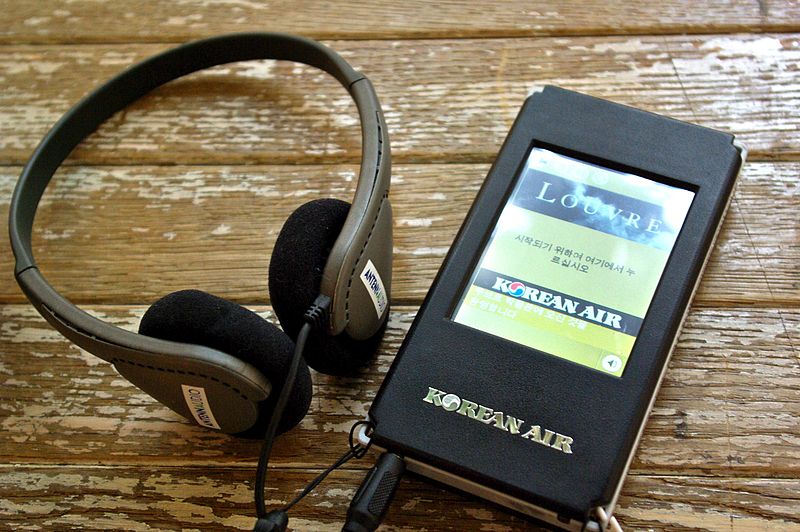Technology Transforms Audio Tours

Amid the profusion of iPhones, Androids and their many cousins, museum directors are moving toward multimedia apps, said Catherine Girardeau of Earprint Productions, a San Francisco-based company that designs museum audio tours.
"You can add pictures and text and video. And so the challenge becomes how to create a satisfying experience within a physical space, like a museum, where they're not just hooked into their screen all the time, but are experiencing what's there, as well," Girardeau said.
A January 2014 study by the Pew Research Center found nearly six in every ten American adults own a smartphone.
Most of those smartphones are enabled with geo-location, which means museums can create audio or multimedia tours that don't require visitors to punch any buttons or numbers at all. A visitor can simply walk up to an exhibit with an app turned on and the tour automatically triggers.
Girardeau's company recently produced an app-based tour of the sculpture garden at the De Young Museum in San Francisco, using such technology, but taking the tour one step further with crowdsourcing.
The tour prompts visitors to record comments about the sculptures. Those comments are continuously curated and woven into the tour, along with the voices of museum curators, artists and experts. It gives visitors a chance to interact with each other in new ways.
SEE ALSO: A Link Between Viruses And Cancer
Girardeau said museum audio tours are no longer simply a "voice of God" narrator booming through headphones or speakers.
"The voice of authority has changed so that museums are now starting to create tours that are much more inclusive, trying to be more representative of the community," Girardeau said, pointing out that the style, enabled by advances in technology, brings new perspectives to the museum experience.
By allowing visitors to essentially become part of the tour, Girardeau said museums are handing them control over the story. In some ways, Girardeau says that makes the art on the tour more universal, by giving people different ways to relate to it.
But Girardeau says the new technology also presents new challenges for those who produce audio and multimedia tours.
Unlike the early days of audio tours, when people hauled large tape decks on wheels behind them through museums, multimedia tours allow people to jump around from one display to another. So a story cannot be scripted from start to finish, to tell the tale in a specific way. The technology gives visitors the reins.
A 2013 industry survey of more than 550 museums found 43 percent had some sort of mobile tour experience, including mobile audio tours, with their exhibits. But that same study found a quarter of the museums surveyed had no mobile tours and no plans to add any in the near future.
"There is a distinct shift away from institutions providing a hardware that visitors must use in order to access a mobile experience," said Loic Tallon in the study. Tallon is the long-time audio tour producer behind the "Museums and Mobile Survey."
The Music Center in Los Angeles still provides the hardware for audio tours, but it only offers one such self-guided tour, which takes visitors through the Walt Disney Concert Hall.
Disney Hall started its audio tours in 2003. The tour relies on visitors punching three-digit exhibit numbers from a map into a traditional audio wand. The tour, narrated by actor Jon Lithgow, is offered in addition to docent-guided tours.
Jeanice Williams, who is the tour coordinator at the Music Center, said they want to give people options.
"You want to accommodate everyone. Some people are not as comfortable using high technology to tour," said Williams.
But Williams said the Music Center is considering whether to create an app-based tour down the road.
"It would be especially cool for those who are housebound" and cannot make it to Disney Hall or the Music Center, said Williams.
As technology continues to advance, so do the tours. Girardeau said she hopes tours will become more immersive, especially if wearable technologies, such as Google Glass, take off.
But Girardeau says the challenge will be balancing technology with the tour, "where can immerse yourself in narrative, but be also fully engaging with the art or whatever it is you're looking at."
Reach Contributor Susan Valot here. Follow the Science Desk here.



